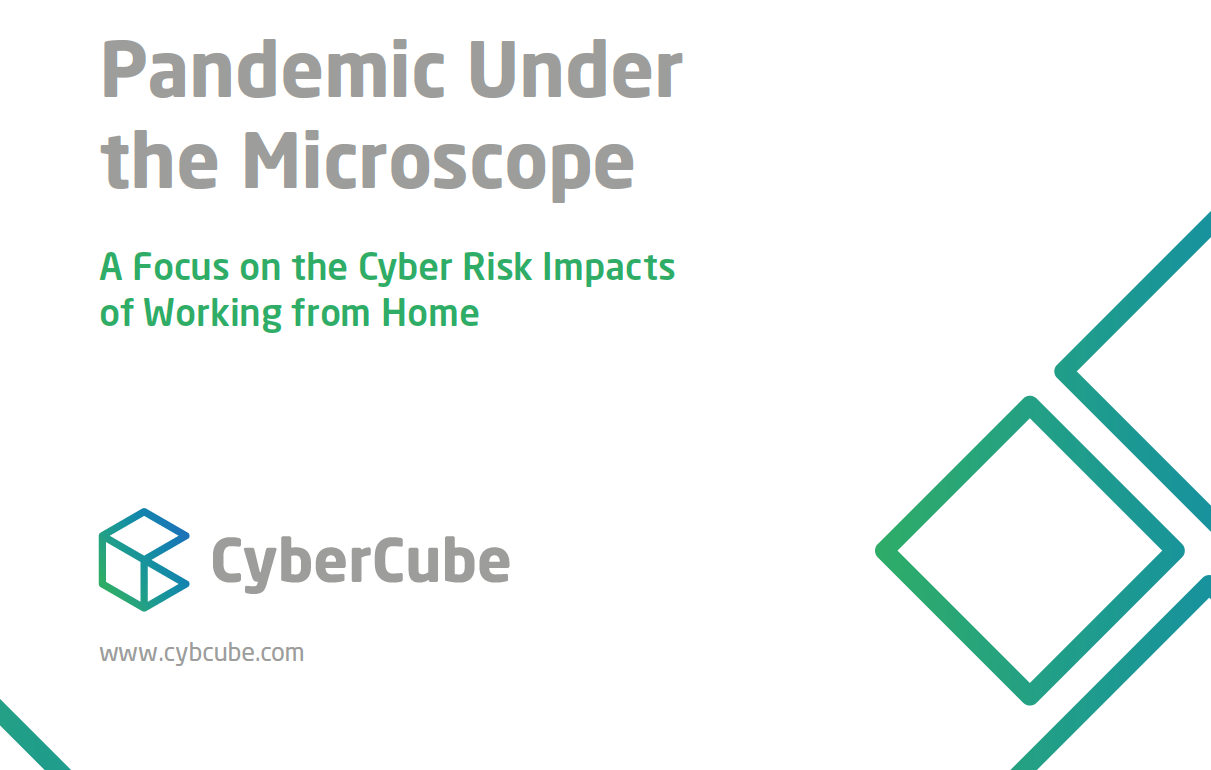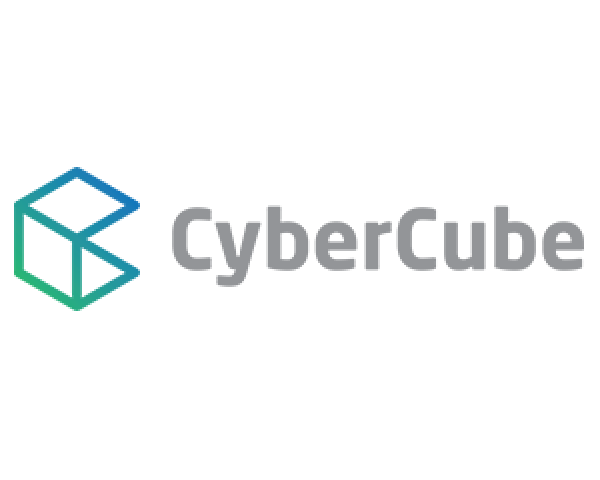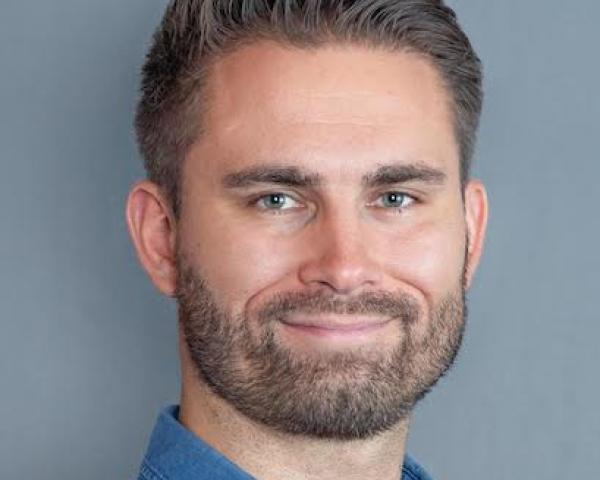|
|
||||||||||||||||||||||||||||||||||||||||||||||||
|
||||||||||||||||||||||||||||||||||||||||||||||||
|
||||||||||||||||||||||||||||||||||||||||||||||||
|
||||||||||||||||||||||||||||||||||||||||||||||||
|
||||||||||||||||||||||||||||||||||||||||||||||||
|
Six Things Newsletter | July 14, 2020
The silos are coming down, 6 life and health trends in the pandemic, the lasting impact of Plaid's innovation, and more.

The silos are coming down, 6 life and health trends in the pandemic, the lasting impact of Plaid's innovation, and more.

|
|
||||||||||||||||||||||||||||||||||||||||||||||||
|
||||||||||||||||||||||||||||||||||||||||||||||||
|
||||||||||||||||||||||||||||||||||||||||||||||||
|
||||||||||||||||||||||||||||||||||||||||||||||||
|
||||||||||||||||||||||||||||||||||||||||||||||||
|
Get Involved
Our authors are what set Insurance Thought Leadership apart.
|
Partner with us
We’d love to talk to you about how we can improve your marketing ROI.
|

Insurance Thought Leadership (ITL) delivers engaging, informative articles from our global network of thought leaders and decision makers. Their insights are transforming the insurance and risk management marketplace through knowledge sharing, big ideas on a wide variety of topics, and lessons learned through real-life applications of innovative technology.
We also connect our network of authors and readers in ways that help them uncover opportunities and that lead to innovation and strategic advantage.
Manufacturers must understand that the digital push to run more efficiently creates a security gap that must be addressed.

Let’s be honest: Operational motivations are about speed and efficiency, not security. For manufacturing organizations to effectively manage cyber risk, they first need to understand that the global digital transformation making businesses run smarter and more efficiently is also creating a widening security gap that must be addressed.
Creating Industry 4.0
In manufacturing, investments are largely motivated by the pursuit of increased operational effectiveness and efficiency: doing more for a lower per-unit cost. Often, these investments manifest as new operational technology (OT), for instance to enable higher degrees of automation, accelerated assembly timelines and improved real-time insights. New OT gets added to a large information technology (IT) stack, which has often been built over several decades; in that time, the IT stack has become a complex mix of legacy, aging and modern solutions held together by vulnerable protocols and a “don’t touch what isn’t broken” stability strategy.
Industry 4.0, driven by the pursuit of OT, is the connection of industrial equipment that accesses and analyzes centralized operational data. In essence, this is the next industrial revolution in advanced manufacturing and smart, connected, collaborative factories. This new paradigm is characterized by the action of the physical world becoming a type of information system through sensors and actuators embedded in objects and linked through networks. Beyond having the potential to completely change material and manufacturing processes, Industry 4.0 is expected to contribute to more efficient operations by aggregating data across all facilities, letting companies monitor, measure and improve performance.
This digital transformation introduces new generations of intelligent solutions and integrates these solutions into existing manufacturing processes and technologies including SCADA/ICS and PLCs. In many cases, this collection is controlled by a manufacturing execution system (MES), which is tightly integrated into the manufacturing organization’s ERP system.
See also: The Rules of Digital Transformation
The Threats Grow
Unfortunately, this pursuit of improved operations comes with an unintended consequence: a widening security gap. As manufacturing has become more connected, the threat surface—the collection of points an attacker can use to try to gain access—has increased substantially and now extends from endpoints and networks into cloud services. In fact, the entire manufacturing process (and, by extension, the company that depends on that process running effectively) is more vulnerable to cyberattacks. From opportunistic attacks using commodity malware as a service, to sophisticated hands-on-keyboard attacks that surgically evade defenses, to advanced persistent threats that can operate for years undetected, to industrial espionage using legitimate credentials harvested from phishing campaigns—the list is long, and the consequences can be devastating.
Modern threats can readily bypass legacy antivirus solutions and take advantage of vulnerability windows. Organizations need solutions that can harden endpoints, prevent polymorphic malware and fileless attacks, mitigate malicious code execution and provide investigation and remediation capabilities with dynamic response to security incidents.
As the knowledge of the growing threat landscape solidifies, tension develops between two core factions: OT and IT. Security was a distant priority when vendors created their new OT solutions, yet IT understands the security risks and best practices and wants to take the time to do things as safely as possible. OT is under pressure to hit targets and can feel like IT is slowing them down by unnecessarily overstating the risks. Plus, manufacturers must grapple with systemic vulnerabilities in operating systems and control systems. For instance, it’s important to recognize that many industrial communication standards don’t even consider security because they are based on the old firewall model of complete trust within the network.
But from the shadows comes a third party: attackers. These bad actors see highly connected, unprotected systems built by vendors that know very little about system security and that are content to pass risk to their customer—the manufacturing organization.
Additionally, the supply chain is vulnerable. As trusted partners, third-party vendors often become the overlooked or unwitting accomplice in criminal activities. A Spiceworks survey of 600 IT and security decision-makers that asked about supply chains highlights this risk.
While the majority of respondents felt confident in their vendors to keep data safe, nearly half (44%) of firms had experienced a significant, business-altering data breach caused by a vendor. Human error and stolen passwords accounted for 26% of the breaches, while malware played a key role in half of the attacks.
While past attacks against major manufacturers and industrial facilities were espionage believed to be sponsored by nation states and based on ideology, many of the latest attacks are the work of cyber criminals motivated purely by profit. Of course, criminals don’t need to shut down a facility to extract payment. In many cases they exfiltrate sensitive information (trade secrets, proprietary data and intellectual property, financial details, private emails, account credentials) and then threaten to release it publicly if a ransom isn’t paid. In some cases, attackers have even weaponized regulations like GDPR, which impose fines when breaches compromise personal information.
See also: Will COVID-19 Be Digital Tipping Point?
As operation and information technologies converge following an almost predictable path of profit-driven natural selection, the leaders of each group have yet to attain a similar level of integration. The operational groups lack the security expertise of their IT counterparts, and IT experts are often excluded from operational decisions, creating an inherent vulnerability that reaches to the top of the organization.
Cybersecurity is not an IT problem to solve; it’s a business risk to manage. Until manufacturers realize that OT and IT are not in competition with each other, they will remain easy prey for cybercriminals who recognize this philosophical flaw and are willing to exploit it.
Get Involved
Our authors are what set Insurance Thought Leadership apart.
|
Partner with us
We’d love to talk to you about how we can improve your marketing ROI.
|

Mark Sangster is vice president and industry security strategist for eSentire. He is a member of the LegalSec Council with the International Legal Technology Association (ILTA).
With the sudden shift to remote-only interactions, insurers can no longer dictate the speed of their transformations.

Insurance companies have been slow to embrace digital transformation. They talk about the cost of integrating legacy and non-legacy technologies, and they worry about the disruption to business operations and the resulting loss of productivity. More importantly, they have been insulated from market pressures to transform because of regulations and capital resources that limit competition. With the sudden shift to remote-only interactions, insurers can no longer dictate the speed of their transformations.
As insurers scramble to implement digital solutions, they must divide their focus and resources. They have to implement policies and technologies to support employees working remotely while delivering customer-facing solutions that do not require in-person contact.
On top of these changes, the industry must make adjustments during uncertainty.
On the plus side, insurers have a wealth of research and experience to draw from. Because they are behind the curve when it comes to digital transformation, insurers should leverage what other industries have learned to jump-start their transformations.
The first thing that needs to change is the culture.
Changing corporate culture requires reforming the fundamental beliefs and values of an organization. For some insurers, that means changing a mindset that goes back centuries. It is not a simple task. Companies have to reshape their culture to align with a digital world, where customer loyalty rests more on experience than on products. According to a Walker study, customer experience will become a brand's key differentiator by the end of 2020, overtaking price and product.
See also: A Way Forward on Flood Insurance?
Customers, whether consumers or corporations, want the "Amazon experience." They want a self-service portal, an omnichannel delivery and a personalized experience. And, customers are not shy about moving to a different provider if the experience does not meet their expectations. In the U.S., even when people love a company or product, 59% will walk away after several bad experiences, 17% after just one bad experience.
According to Microsoft, 90% of consumers expect a self-service portal on a company's website. Insurers need self-service portals for buyers to evaluate products and make comparisons. Portals should allow customers to file claims and track status. Searchable portals let customers find information that can help answer questions or provide guidance. Companies implement self-service portals to address the long wait times for phone calls or the slow response times to emails.
On average, consumers use a minimum of three delivery channels when interacting with a company. They may use the company's website or mobile app. They check reviews on Facebook or Twitter. Talking to bots, having live chats with agents or conversing via phone with customer support are all part of the delivery channel. Insurers may not support all delivery channels, but they do need to move beyond phone and in-person conversations.
Customers expect consistent communication across all delivery channels. Information on a company website must match the details of a mobile app. Whether talking to bots or people, consumers expect accurate information that is not contradicted by another channel. People expect a seamless experience, no matter how it is delivered.
Seamless is what customers expect of an omnichannel delivery model. No matter the channel, customers expect the same experience. Whether it is product information or order status, the data should be the same on a mobile app as a website. No one wants to re-enter information or repeat a description of a problem when moving from one platform to another. All systems need access to the same information in real time for a seamless experience.
The desire for a seamless experience drives the expectation of a personalized one. Customers expect the companies they do business with to know who they are, what they prefer and what they might purchase. Consumers enjoy Amazon recommendations or on-target suggestions on other social media sites. They want to feel like they are more than a Baby Boomer or millennial market segment.
What does this mean for the insurance industry?
To meet customer expectations, insurers must communicate through self-service portals across multiple channels. No one willingly waits on hold for hours or sits patiently waiting for an online response. If insurers continue to rely on paper-based solutions, they will see their customers leave for more tech-savvy competitors.
See also: Reigniting Growth in U.S. Life Insurance
Without a digital solution, companies cannot create a seamless experience. You cannot shuffle paper fast enough to meet expectations. More importantly, the change in culture must begin at the top. According to McKinsey, companies without executive participation are less likely to have a successful transformation. For an industry that's most comfortable with controlled risk, insurers need to embrace Mario Andretti's philosophy -- "If things seem under control, you're just not going fast enough."
Get Involved
Our authors are what set Insurance Thought Leadership apart.
|
Partner with us
We’d love to talk to you about how we can improve your marketing ROI.
|

Tal Daskal is the CEO and co-founder of EasySend, an SaaS company. Daskal is an expert on all things digital transformation in banking and insurance and is a passionate advocate for the paradigm shift toward no-code development.
Walmart's acknowledgment that it is establishing a health insurance agency shows that traditional barriers are breaking down. Insurers must prepare.

While I've heard many too many empty promises of corporate synergies over the years, I've learned that one form of cross-selling really does work: "Do you want fries with that?"
So, I've been waiting (and hoping) for insurers to find ways to achieve similar sorts of easy, intuitive crossover sales.
There are already a few combo meal sorts of offerings that show promise -- e.g., Tesla bundling auto insurance with its cars, or Comcast selling insurance into homes that are tethered to it via coaxial cable -- but my ears really perked up last week when stories surfaced about Walmart forming an insurance agency.
It just makes sense. With 5,000 outlets in the U.S. alone and 265 million customers worldwide, Walmart has a target-rich environment for insurance sales. Many, in fact, are visiting Walmart to pick up pharmaceuticals or to buy other items related to their healthcare, so health insurance is on their minds. Walmart, given its relentless efficiency, could easily develop insurance products that undercut competitors' prices and would have the credibility with customers to sell boatloads of those products.
In fact, Walmart wouldn't even have to generate the sorts of profit margins that competitors do, because a tighter relationship with customers on their health needs would bring them into stores more often and let Walmart generate profits on groceries, home goods and all sorts of other products. (Regulators will surely weigh in on what constitutes fair competition.)
Walmart signaled that it will begin with a niche, Medicare Advantage, that plays to its price-sensitive demographic. In fact, through a $4 generic drug program, Walmart often provides pharmaceuticals to customers for less than their Medicare Advantage insurance would charge them, so Walmart has already made inroads.
In research I've done with Chunka Mui on major strategic mistakes, the kind of adjacency move that Walmart is making raises red flags, because retailing and health insurance have little in common. But Walmart has done all the right preparation, having spent more than 15 years testing the waters in health care and insurance -- hosting insurance agents onsite, setting up joint ventures with insurers, putting clinics in some stores, buying and deploying technology to help customers manage medications, experimenting with telemedicine and much more.
Walmart is also starting small with its agency, advertising for employees and building an internal capability, rather than spending a bunch of money on a splashy acquisition or two. (Sears made that mistake in the early 1980s when it bought Coldwell Banker and Dean Witter, only to be distracted by integration issues and take its eye off the ball in its core business, which it ceded to... Walmart.) So, I see no particular obstacles for Walmart.
In fact, health insurance is such a mess that many customers would love an outsider's approach, especially if the outsider is, like Walmart, known for being straightforward and inexpensive.
Given the battle to the death between Walmart and Amazon, it's reasonable to think that Amazon might now accelerate whatever plans it has for health insurance. It might behoove insurers to get ready, and even to go on the offensive, looking for partners outside the industry rather than waiting for them to define an opportunity in insurance.
Insurers won't be pushing fries and, alas, can't offer dollar meals or dollar anythings, but there are lots of healthy options that can be offered and sold easily if insurers get creative about how to bundle their products with partners'.
Stay safe.
Paul
P.S. Here are the six articles I'd like to highlight from the past week:
6 Life, Health Trends in the Pandemic
Life and health carriers are responding with new protection products and services.
Reigniting Growth in U.S. Life Insurance
Agile response to COVID-19 bodes well for returning the life insurance sector to long-term growth and wider financial protection in society.
COVID-19 Highlights Gaps, Opportunities
The pandemic and the response to it have highlighted significant gaps in industry offerings that are yet to be resolved.
Another Reason for Insurers to Embrace AI
AI alerts have played and continue to play a critical role in detecting and controlling future outbreaks like COVID-19.
Wildfire Season Off to Perilous Start
Fires can create their own weather: Smoke-infused thunderstorms produce lightning that starts new fires and can lead to fire tornadoes.
Lasting Impact of Plaid’s Innovation
The temptation to try to own all the value at every layer of a solution can be fatal, and is something Plaid brilliantly avoided.
Get Involved
Our authors are what set Insurance Thought Leadership apart.
|
Partner with us
We’d love to talk to you about how we can improve your marketing ROI.
|

Paul Carroll is the editor-in-chief of Insurance Thought Leadership.
He is also co-author of A Brief History of a Perfect Future: Inventing the Future We Can Proudly Leave Our Kids by 2050 and Billion Dollar Lessons: What You Can Learn From the Most Inexcusable Business Failures of the Last 25 Years and the author of a best-seller on IBM, published in 1993.
Carroll spent 17 years at the Wall Street Journal as an editor and reporter; he was nominated twice for the Pulitzer Prize. He later was a finalist for a National Magazine Award.
Life and health carriers are responding with new protection products and services.

COVID-19 is, in many ways, still a disease of uncertainty, both in the severity of its symptoms and the scale of financial hardship it could ultimately cause. And no business is better equipped to confront uncertainty than insurers.
So it is perhaps unsurprising that life and health carriers are responding to the pandemic with a variety of consumer offerings, from complimentary, compassionate benefits to new protection products and services.
After performing a global review of responses to COVID-19, RGA identified six primary trends:
Compassionate and Complimentary Benefits
Insurers have sought to build trust and goodwill by offering complimentary COVID-19 coverage as a compassionate benefit or marketing expense, with an emphasis on policies with lower face value to manage overall exposure. A multinational insurer in Hong Kong, for example, has begun offering an additional hospital cash benefit of HK$600 (equivalent to US$77) per day for covered clients who may be required to undergo a mandatory quarantine in a hospital or isolation center. Similarly, the local branch of another major insurer in Thailand partnered with a leading telecom operator to offer a market-first, free-of-charge COVID-19 coverage benefit to customers. If a customer requires treatment in a hospital, he or she will receive a hospital indemnity benefit of up to THB1,000 (equivalent to US$31) per day. Still another multinational partnered with a Singapore-based insurer serving private hire drivers to offer a complimentary benefit for all of these essential workers as part of the company’s Group Prolonged Medical Leave insurance policy.
Other forms of consumer relief have proved popular, including premium holidays, grace periods and reductions to policy/premium amounts. Many insurers globally have offered grace periods for premium payments either voluntarily or at the request of local governments and regulators. On the health insurance side, some insurers have waived cost-sharing, co-pay and other deductibles for inpatient hospital admissions due to COVID-19. Some have also sought to support healthcare first responders and other frontline workers through donations of personal protective equipment (PPE) and other charitable efforts.
COVID-Specific Protection
COVID-19 emerged in Asia, so it stands to reason that regional insurers have been first to develop hospital cash and comprehensive care products offering standalone protection in case of diagnosis. For example, one Bangkok-based broker and insurer teamed up to offer Thailand's first policy that provides cash upon diagnosis with the coronavirus. Similarly, a major Indian insurer offers a COVID-19 support plan, providing end-to-end treatment services, including consultations with qualified doctors, to policyholders who become infected. In Malaysia, a major multinational has introduced a COVID-19 hospital assistance program with an upfront one-time cash payment upon hospitalization with the disease. The program includes a one-time cash payout for family assistance should dependents also be diagnosed. It also includes other assistance for consultation and treatment costs while in isolation or intensive care. Similar products are now emerging across Europe and North America.
See also: Reigniting Growth in U.S. Life Insurance
Segment-Specific Offerings
The word pandemic derives from the combination of two Greek words: pan ("all") and dēmos ("people"). But, while all are at risk of contracting the coronavirus, a few face far greater danger due to the essential public services they must perform. Insurers are customizing certain offerings to serve these frontline workers. In China, a first-in-market COVID-19 medical worker insurance program pays cash compensation upon diagnosis. Similarly, healthcare personnel at specified primary and secondary public hospitals, treatment centers, and pharmacies are eligible to sign up for another Chinese insurer’s COVID-19 coverage for free. Another insurer launched COVID-19 coverage targeting shopkeepers in India, with the product paying 100% of the sum insured, irrespective of hospitalization expense, upon diagnosis.
Health and Wellbeing
The coronavirus not only co-opts our cells, it exploits our fears. A lack of clear information and shortages of available testing have compounded the problem in some locations. U.S. insurers responded with new consumer plans that seek to bundle mental wellness services with physician care to address public anxiety with clear and actionable medical guidance. One U.S.-based healthcare carrier repurposed its existing telehealth application for mobile devices. The app now provides a coronavirus assessment based on guidelines from the U.S. Centers for Disease Control and Prevention and the U.S. National Institutes of Health. Customers can connect directly to a board-certified doctor via text or secure two-way video call and use the app to discuss the assessment results. Another U.S-based provider of healthcare IT solutions and services launched a new telehealth product to help physicians and patients stay connected during COVID-19 through real-time video technology. A number of mental health schemes have also emerged around the world with an emphasis on technology to address social isolation.
COVID Diagnostics
Artificial Intelligence (AI) has been coming to medicine, and insurance, for some time. Now the spread of COVID-19 may present a new opportunity to increase use of smart apps and chatbots. A number of insurers are relaunching and rebranding existing AI applications to meet surging diagnosis and informational needs in an era of social distancing and staffing shortages. In China, one major insurer launched a smart, AI-based audio screening system for COVID-19 to strengthen epidemic control and prevention through automated interviewing and risk assessment. Another U.S.-based case manager launched a coronavirus chatbot to answer questions related to COVID-19 and assist in diagnosis, and a multinational in Hong Kong retooled its mobile application to assist in coronavirus contact tracing. Much remains unknown about the overall effectiveness of these emerging technologies, but the increasing use of AI is a trend that merits monitoring.
New Approaches to Sales Operations
COVID-19 has been dubbed an “invisible enemy,” but its effect on the insurance industry has been very apparent. As traditional evidence and sales channels have been disrupted by lockdowns, carriers have moved to accelerate a transition to alternative evidence, simplified and accelerated underwriting and digital distribution.
“Selling at a distance” is a hot industry topic, and those insurers with relatively strong digital capabilities may be best-positioned, while others are playing catch-up. A major multinational recently launched a digital enrollment system, while another unveiled “simple life insurance” to be sold online. Another insurer is now using WhatsApp to deliver policy and renewal documents. One carrier has simplified the claims process for its critical illness policyholders. Upon diagnosis of COVID-19, the policyholder needs to only submit a certificate from a government medical officer to receive a lump sum payout rather than the more copious paperwork typically required.
See also: 4 Post-COVID-19 Trends for Insurers
As the pandemic unfolds, we expect more offerings to emerge. In the medium term, it may not just be health and safety concerns that drive offering design, but the state of the overall economy. Interest rates and slowing economies are placing renewed pressure on insurers to reassess less profitable offerings, such as those with generous guarantees, and to emphasize capital efficiency in the overall product portfolio. Against this challenging backdrop, it is unclear how many product innovations of all kinds are languishing in the exploratory phase versus being introduced to consumers at this time.
Get Involved
Our authors are what set Insurance Thought Leadership apart.
|
Partner with us
We’d love to talk to you about how we can improve your marketing ROI.
|

Othmane Akesbi works with clients and business development teams globally and locally to identify and unlock growth opportunities that leverage RGA's unique set of expertise and capabilities in the life and health insurance space.

Dan Lyons is vice president, business initiatives, at Reinsurance Group of America, where he leads the global product initiatives team and supports RGA's offices and clients in maximizing the value from RGA's product development and digital product assets around the world.
Lyons also works with local RGA business development teams to support client engagement planning and collaborates with clients to identify opportunities for securing the full benefit of a RGA partnership.
Organizations should be checking to ensure that new modes of work aren't compromising cyber security.

The novel coronavirus (COVID-19) and the resultant move to widespread homeworking has created vulnerabilities for criminals to exploit. Homeworking has exposed new access points for cyber criminals to gain entry to corporate systems, including domestic PCs, laptops and Wi-Fi routers. Homeworking has also led to a diminution in employees’ distinction between work and personal emails, to increasing usage of devices with insecure passwords and to use of online applications that would be prohibited in the corporate environment due to security concerns.
Criminals have also exploited the public’s need for information on COVID-19 to create a range of social media and text message attacks, particularly in those countries worst affected by the virus. In addition, the rapid rise of online shopping due to lockdown has exposed the public to a higher level of well-established cyber scams such as form-jacking and spoofing.
Any organization that rapidly deployed new technology, applications, services or systems at the onset of the pandemic should now be focused on taking a look back and ensuring that the organization has implemented best practices in security configuration and architecture. Many organizations are discovering that their rapid deployments, while necessary, may have introduced undesirable security vulnerabilities.
In a new report, Darren Thomson, Head of Cyber Security Strategy at CyberCube; Jon Laux, Head of Cyber Analytics, Reinsurance Solutions, at Aon; and Rebecca Bole, Head of Industry Engagement at CyberCube; explore the changes to our digital landscape and lay out ways to head off problems.
A video featuring Jon and Darren discussing some of the report’s key findings can be found on CyberCube’s YouTube channel. Here is a press release.
Get Involved
Our authors are what set Insurance Thought Leadership apart.
|
Partner with us
We’d love to talk to you about how we can improve your marketing ROI.
|

CyberCube delivers the world’s leading cyber risk analytics for the insurance industry. With best-in-class data access and advanced multi-disciplinary analytics, the company’s Software-as-a-Service platform helps (re)insurance organizations make better decisions when advising clients on the financial impact of cyber risk, underwriting individual risks or managing cyber risk aggregation. CyberCube’s enterprise intelligence layer provides insights on millions of companies globally and includes modeling on thousands of points of technology failure.
For more information, please visit www.cybcube.com or email info@cybcube.com
The temptation to try to own all the value at every layer of a solution can be fatal, and is something Plaid brilliantly avoided.

Six months ago, Visa acquired Plaid for a cool $5.5 billion, instantly making the fintech company a legend among technology startups – and its founders, investors and early employees very rich.
While the money is fun to consider, it’s not my key takeaway about Plaid, whose software provides the plumbing that lets startups connect to users' bank accounts and has been employed by peer-to-peer payment app Venmo, mobile investing app Robinhood and many others.
As the CTO of a startup – one developing a technology platform for insurance carriers – I’m finding the real topic of conversation among my peers, as well as among my company’s investors, partners and prospects, is Plaid’s technology approach and its ramifications.
Plaid’s decision to focus on application programming interface (API) development vs. application development is a natural starting point for such a discussion. (The main point being that Plaid didn't set out to build all the financial apps itself; instead, it provided a key interface that others, like Venmo and Robinhood, could exploit.) But there’s more to the story. And while it has already become fashionable to describe certain companies as “the Plaid of (fill in the industry),” I don’t think Plaid will be remembered as the face that launched a thousand API ships.
Not to say that the “API-ification” of the enterprise isn’t upon us. We’re seeing it in insurance and more broadly across financial services, as more processes within and across companies plug into each other via these software interfaces. But that trend started before, and is bigger than, Plaid. Conversely, Plaid’s significance extends beyond its APIs.
So what then can Plaid teach us? What can startups, and the technologists helping build them, learn from this early 2020 success story and carry forward into the young decade?
Here are four key takeaways:
1. Empower Builders
Any time a company develops a technology that makes it possible for others to do something they couldn’t do before, that company has the makings of a hit. Many companies succumb to the temptation of trying to own too much of that innovation’s value rather than putting some of that value creation into the hands of others.
Consider Google Maps. Prior to Google Maps, it wasn’t easy for a company to build a dynamic map into its customer experiences. Yet with the Google release, retailers could put all their locations into their web experience so consumers could find them without having to go to a specialized third party service. Now dynamic maps are an integral part of an array of experiences from retail and restaurants to real estate and travel.
If Google Maps had insisted on being the destination of all things maps, i.e., “Find My Retailer,” “Find My ATM,” “Find My Restaurant,” etc., and owning the entire value proposition, the proliferation of map-enhanced experiences across the internet would not have been as quick or as pervasive.
Even a company of Google’s size recognized that that approach would have put the burden of application-layer innovation on one company, one set of developers and one team of product managers. Instead, Google famously developed dynamic maps to be an embeddable component that can fit into any other application, enabling a variety of developers to innovate for their particular markets and end-users.
That’s something Plaid got right. In developing its APIs, Plaid unlocked banking data that had never been available and usable before, but the company was smart enough to keep the focus there and let others – Venmo, for instance – innovate at the application layer. Plaid's approach brings so many more companies into the innovation mix, which in turn spurs more A/B testing, ultimately yielding more robust and varied applications – the true benefit of best of breed.
2. Love Your Hacks
Plaid did a lot of things that business school won't teach you. One of them was embracing the hack. Experience has shown that many of the most successful tech companies have used hacks to get their businesses off the ground and deliver their first positive results. Airbnb and Uber come immediately to mind, and so does Plaid.
This is important, because banks were never in the business of exposing their data in a clean way – they didn’t have nice open APIs with clean documentation. That meant that Plaid had to crack the code on its own, figuring it out for itself every step of the way. How do we get access to Bank of America data? to Chase? to the next big bank?....
The moral of the story is they did it. Sure, initially they did it with workarounds and solutions that were laughed at on forums and dismissed as insecure. But they stuck with it and built big enough engineering and data teams to make the company, its approach and its solutions sustainable over time.
But first came the hack. Before becoming sustainable, before scalability even enters the equation, Plaid was getting its hands dirty showing the value of its work, no matter how unsustainable the approach. In this regard, I see Plaid as embodying Paul Graham’s famous admonition to startups: “Do things that don’t scale.” I would just add: “until they do.”
3. Trust the Size of Your Market (and the Defensibility of Your Solution)
Technologists and entrepreneurs have to develop thick skins. We hear “no” more than “yes,” and often find ourselves answering the same questions: What is the size of your market? How are you going to monetize your innovation? How defensible is your solution?
Here, I have to tip my hat to Plaid. As a trailblazer, the company had to argue for a big market that didn’t exist yet, because no one else was monetizing access to financial data – and the generation of apps that would use that data so successfully had yet to be created.
Of course, Plaid was right. Other companies would use its APIs and multiply their value many times over. But before Plaid was right, it believed. The size of its conviction ultimately enabled it to create and fuel a multibillion-dollar market. And while it believed, it minded its knitting, focusing intently on innovating and letting great software speak for itself.
Did that answer investors’ initial questions about defensibility? At first, probably not, but as the number of successful hacks mounted, and as it became clear that the problem it was trying to solve was sufficiently complex and the competitive landscape it inhabited sparsely populated, the company earned enough breathing room to deliver each successive, successful result. By 2018, Visa and Mastercard were in on the company’s $250 million raise, and the rest is history.
See also: Insurance Innovation — Alive and Kicking
Getting there took some swagger, perhaps even a little arrogance, that Plaid could solve something no one else had dared attempt. That attitude may have been its best line of defense.
4. Guillotine Your Platform!
As I mentioned, the temptation to try to do too much, to own all the value and innovation at every layer of a solution, can be fatal, and is something Plaid brilliantly avoided. Plaid will be remembered for focusing on APIs and powerful administrative functionality, leaving the user interface (UI) and user experience (UX) layers for others to perfect and deploy.
In this case, Plaid serves as a powerful example for the many “platform” developers across the startup landscape, mine included. Platform developers want to solve it all, but Plaid is helping us not to. They deliberately chose not to provide the full vertical experience of their service, leaving it up to developers outside their company to figure things out for themselves and provide their customers their own distinct experiences.
This “headless” platform model is quickly gaining traction among startups and other solution providers, as well as among big companies hoping to accelerate or complete their digital transformations. These companies don’t want their tech providers to own any portion of the customer’s journey and experience; they just want the value, and they want it expressed natively within their own digital footprint.
That shift, and tech startups’ ability to deliver on it, may be Plaid’s most lasting legacy.
Get Involved
Our authors are what set Insurance Thought Leadership apart.
|
Partner with us
We’d love to talk to you about how we can improve your marketing ROI.
|

Arach Tchoupani is CTO and co-founder of Breathe Life, an insurtech startup. He has helped lead the scaling of startups in the U.S. and Canada, most notably Lot18 and Primary.com.
You don't always need to innovate. You can first copy. If need be, you can then buy the innovator. (But never steal the intellectual property.)

The chairman of Reliance Industries, Mukesh Ambani, recently announced a video-conferencing tool, JioMeet, that looks just like Zoom. On social media, Indian entrepreneurs are panning him for copying; one person tweeted that he should have called it "Jhoom" because that is how it would be pronounced locally. But it isn't Ambani who is out of touch with the way the tech industry works, it is Ambani's critics. They don't understand how tech innovation works.
Although this may sound strange, copying is good for innovation. This is how Chinese technology companies got started - by adapting Silicon Valley's technologies for Chinese use and improving on them. The Chinese routinely monitor what app is achieving success elsewhere and duplicate it before they start adding features and innovating; they learn from the best and improve.
It's how Silicon Valley works, too. Even Zoom is a knock-off of the technologies it is competing with: WebEx, Skype and BlueJeans.
Steve Jobs built the Macintosh by copying the windowing interface from the Palo Alto Research Center. As he admitted in 1994, "Picasso had a saying, 'Good artists copy, great artists steal'; and we have always been shameless about stealing great ideas." Almost every Apple product has features that were first developed by others; rarely do its technologies wholly originate within the company.
The iPod, for example, was created by British inventor Kane Kramer; iTunes was built on a technology purchased from Soundjam; and the iPhone frequently copies Samsung's mobile technologies -- while Samsung copies Apple's.
Mark Zuckerberg built Facebook by copying from MySpace and Friendster, and he continues to copy products. Facebook Places is a replica of Foursquare; Messenger video imitates Skype; Facebook Stories is a clone of Snapchat; and Facebook Live combines the best features of Meerkat and Periscope.
Now, Zuckerberg is trying to copy WeChat by integrating private messaging, groups and payments. This is why he is so focused on getting WhatsApp Payments approved by the Indian regulators. Before purchasing the company, he desperately tried to copy WhatsApp, but repeatedly failed. So he ended up purchasing the company, which had almost no revenue, for an astonishing $20 billion or so, which was about 10% of Facebook's market cap.
This is another one of Silicon Valley's secrets: If stealing doesn't work, then buy the company.
By the way, they don't call this copying or stealing; it is called "knowledge-sharing." Silicon Valley has very high rates of job-hopping, and top engineers rarely work at any one company for more than three years. They routinely join their competitors or start their own companies. As long as engineers don't steal computer code or designs, they can build on the work they did before. Silicon Valley firms understand that collaborating and competing at the same time leads to success. This is even reflected in California's unusual laws, which bar non-competition agreements.
In most places, entrepreneurs hesitate to tell others what they are doing. Yet, in Silicon Valley, entrepreneurs know that, when they share an idea, they get important feedback. Both sides learn by exchanging ideas and developing new ones. So when you walk into a coffee shop in Palo Alto, those you ask will not hesitate to tell you their product-development plans.
Neither companies nor countries can succeed, however, merely by copying. They must move very fast and keep improving themselves and adapting to changing markets and technologies.
See also: A Quarantine Dispatch on the Insurtech Trio
Apple became the most valuable company in the world because it didn't hesitate to cannibalize its own technologies. Jobs didn't worry that the iPad would hurt the sales of its laptops or that the music player in the iPhone would eliminate the need to buy an iPod. The company moved forward quickly as competitors copied its designs. I expect Jio will do this, as well: learn from what works best in the Indian market, and come out with better technologies.
There is a line here that should never be crossed, however, and that is intellectual property theft. China's Huawei was sued by Cisco for its "systematic and wholesale infringement of Cisco's intellectual property," for example. Huawei's 5G technologies were likely stolen from Nokia and others. The core of many of China's most advanced technologies is based on such theft. This is never good for innovation and leads to even more destructive habits and the types of blowback that Huawei is seeing all over the world as countries rightly ban its technologies.
My simple message to Indian entrepreneurs is to imitate before they innovate - but don't cross any ethical lines.
This article first ran in the Hindustan Times.
Get Involved
Our authors are what set Insurance Thought Leadership apart.
|
Partner with us
We’d love to talk to you about how we can improve your marketing ROI.
|

Vivek Wadhwa is a fellow at Arthur and Toni Rembe Rock Center for Corporate Governance, Stanford University; director of research at the Center for Entrepreneurship and Research Commercialization at the Pratt School of Engineering, Duke University; and distinguished fellow at Singularity University.
May had the fewest severe weather reports since May 2014. A tornado drought has resulted in the fewest recorded tornadoes since at least 1970.

In the 1939 blockbuster film “The Wizard of Oz,” Dorothy, Toto and their three companions run toward the Emerald City across a field of poppies; an intoxicating scent puts her, Toto and the Cowardly Lion to sleep. Then, from the clear green-blue sky, snow starts to fall. Dorothy, Toto and the lion awake, and the lion says something like, “Unusual weather we’re having, isn’t it?”
Insurance companies across the U.S. might be saying something about unusual weather given the on-again, off-again occurrences of severe weather. In fact, with all the other issues the insurance industry has had to deal with from COVID-19 and the worldwide protests and riots, which will already account for higher than normal losses for some insurance companies, maybe the silver lining might be that the severe weather season has overall been a roller coaster and not just a straight plunge.
After an active April (second most active for tornadoes) of severe weather across the Southern states, which accumulated a total of about $6 billion in insurance loss, May and June have been much better. May was atypical, with just half the insured loss of April, which is truly welcome news for the insurance industry. This shows up in the severe weather reports as well, with May having well below normal severe weather reports, especially tornadoes.

In fact, May had the fewest severe weather reports since May 2014, led by what you might call a tornado drought that has resulted in the fewest recorded tornadoes since at least 1970. On top of that, May had the fewest number of EF2+ tornadoes in recorded history, according to preliminary data, and the insurance industry still has not experienced an EF5 tornado since May 20, 2013. Another way to gauge the lack of severe weather in May across the U.S. is by looking at the occurrences of moderate/high outlooks for severe weather. May 2020 was the first year without a moderate risk or higher for the day 1 outlook issued by NOAA Storm Prediction Center since 1995, and May had the fewest number of tornadoes watches in recorded history (1970 – present). May was truly unprecedented when compared with the active April that occurred across the U.S.
See also: Wildfire Season Off to Perilous Start
Sam Lillo, who is a postdoc at the Cooperative Institute for Research in Environmental Sciences at the University of Colorado Boulder, likely shows the situation best in the image he created below of tornado activity anomalies for the U.S. The map and graph show tornado activity is near record lows and for the last six weeks; none of the climatological favored areas for tornadoes have seen tornadoes. Negative anomalies are shown across Oklahoma, Texas, Colorado and Kansas. I guess Dorothy would truly say this is unusual weather for Kansas. And, if she were in Florida, it would be highly unusual to see above-normal tornado activity. In fact, for Florida, June has already matched their climatological average for the month, likely a result of Tropical Storm Cristobal, which produced 11 tornadoes across Florida. The average for June in Florida is 7.6 tornadoes.

Speaking of Cristobal, its impacts will likely be felt by the insurance industry, but, as illustrated, the Florida tornadoes' impacts will be far away from the center of the storm. It might be possible that several states have a higher loss hundred of miles away from the landfall state of Louisiana with higher losses in the upper Ohio River Valley and Michigan. In total, Cristobal resulted in 497 wind reports for the area, which will likely lead to a loss level similar to a derecho wind event. In fact, with hail reports running below normal and the up and down of the tornado season, the wind reports are what could be driving the insurance industry losses this year, with several derecho wind events in atypical locations. On June 3, a derecho event went across central Pennsylvania; a few days later another derecho moved in northward from Colorado to South Dakota; and then the remnants of Cristobal merged with a mid-latitude cyclone that caused a lot of wind damage reports.

Rounding the corner
As the summertime heat starts to take over the overall U.S. weather pattern. the ingredients for severe weather outbreaks start to wane across the U.S. With the typical peak of the U.S. tornado season being the start of May, and the hail peak being the end of May, the overall focus will continue to be on wind-related events, which tend to peak in early July. Since tornado losses drive the overall large tail events for the insurance industry, and hail tends to drive the overall average annual loss overall. and with both of these perils now past their climatological peak, there are some positives for the insurance industry.
In terms of PCS severe weather insurance industry losses, typically 77% of the average U.S. severe thunderstorm loss and 64% of the total number of severe weather-related events have developed by July 1.
Of course, the forecast is for a busy 2020 Atlantic hurricane season....
Get Involved
Our authors are what set Insurance Thought Leadership apart.
|
Partner with us
We’d love to talk to you about how we can improve your marketing ROI.
|

Andrew Siffert is vice president and senior meteorologist within BMS Re U.S. catastrophe analytics team. He works closely with clients to help them manage their weather-related risks through catastrophe response, catastrophe modeling, product development and scientific research and education.
The pandemic and the response to it have highlighted significant gaps in industry offerings that are yet to be resolved.

Months into the global COVID-19 crisis, it is evident that the insurance industry failed to step up to the plate with actions that could have helped the community cope with the new situation. In a time where both individuals and businesses need support -- more than ever -- one would have hoped to see a more coordinated response or a strategic act from such a powerful industry. Instead, the pandemic and the response to it have highlighted significant gaps in industry offerings that are yet to be resolved.
As soon as the pandemic started, a lot of the major legacy insurance companies simply stopped selling policies for certain kinds of coverage, and some of them still aren't selling them. In an attempt to manage the expectation of their customers, they put up disclaimers on their websites about not covering COVID-19-related losses. We have gotten used to seeing these disclaimers during natural catastrophes to deter fraud, but the outcome for consumers is still grim, at a time when they need protection and support.
Even now, there is still a large amount of uncertainty and posturing between the insurance industry and regulators about who should have been covered by existing policies that may or may not have explicitly excluded pandemic-related losses. As a result, many customers who were affected by COVID-19 and already held insurance policies -- like travel insurance, which explicitly has blanket exclusions for pandemics -- remained unclear as to whether they will be paid.
In the past decade, we have seen huge growth in the number of gig economy contract workers, but they generally aren’t treated as employees, meaning that they do not have sufficient benefits or insurance for loss of income. It has become evident in this period that almost 40% of the U.S. workforce don't have the support they need.
Herein lies a valuable opportunity: to adapt and provide better fundamental support to businesses and their workers, which in many cases have proved to be essential during these difficult times.
See also: Strategic Planning in the COVID-19 Era
The good news is that there is a huge opportunity for insurers to harness technology to create products and means of getting these products into the hands of people who need them, which will put insurers in a better position to support communities when the unexpected happens again.
First and foremost, we need new products: customized, robust and agile solutions that provide actual protection during times of need. The cookie-cutter products that traditional insurers have been offering have not proved to be beneficial. Simply bundling-in pandemic coverage to every single insurance policy is not the answer, as it would raise policy prices for a lot of consumers. This is where product innovation can really make a difference. For example, general availability for "loss of income protection” for gig economy workers would have taken some of the burden off the government, while also helping the community stay resilient. Adaptable and responsive insurance coverage options for these people or the small business community could ensure they maintain the appropriate level of insurance as their income or businesses fluctuate. The exclusions for a pandemic in insurance policies are fairly broad, so there’s clearly a need for explicit pandemic coverages -- either as embedded coverages, or sold separately. And of course, parametric products of some type should be developed and made available to kick in when different types of events happen.
As the economy starts to reopen, some businesses can only operate at a 30% capacity. Will they be able to claim for their losses under existing insurance policies? Will they have access to coverage for a liability resulting from an infection that happens inside a small business? For small and medium-sized businesses (SMBs), all of these situations could mean going bankrupt. Innovative products don't have to be all-encompassing as far as losses are concerned. Relatively affordable insurance products that provide a basic level of financial support to businesses to navigate difficulties -- even if it’s just to enable them to keep the lights on for a while -- have a demand in the market right now.
Second, we need to change the way in which insurance products get distributed. As an industry, we need to help people get the right coverage when they need it. Generally speaking, one of the drivers of underinsurance in the community is the fact that insurance is complicated to understand and purchase. In most scenarios, people have to go out and search for protection, and most just opt out of that task. Others don't understand what they are buying, don't get the appropriate coverage or are simply underinsured. Giving consumers the opportunity to get covered, if they want to, is important. Making protection available and offering it in the right circumstances, as a product or add-on at the point of purchase, is a big opportunity for the industry.
The role of technology is to use data that exists from platforms like payrolls systems or e-commerce websites to better understand the level of risk and offer customers the right level of insurance at the right time. Reducing friction on the front end ensures that the level of insurance is adequate and will drive down the volume of underinsurance in communities, which provides a lot more resilience in the event that a pandemic happens again.
See also: 4 Post-COVID-19 Trends for Insurers
It will be a long time before the insurance industry has a feel for the scope and the scale of the losses that have and will be incurred by businesses, individuals and insurers as a result of COVID-19. The pandemic will have a big impact on coverage and pricing, and it still remains to be seen if the industry will get together to support the community by making insurance available to those who are affected.
We should all join hands and step up to ensure our communities are protected. We need to use the power of technology to really innovate with new insurance products and distribution methods that guarantee people are properly protected and safe when things go wrong.
Get Involved
Our authors are what set Insurance Thought Leadership apart.
|
Partner with us
We’d love to talk to you about how we can improve your marketing ROI.
|

Mitch Doust is executive vice president of the Americas for Cover Genius, where he is responsible for the establishment and growth of the XCover platform and the broader Cover Genius business across North America, Canada and Latin America.